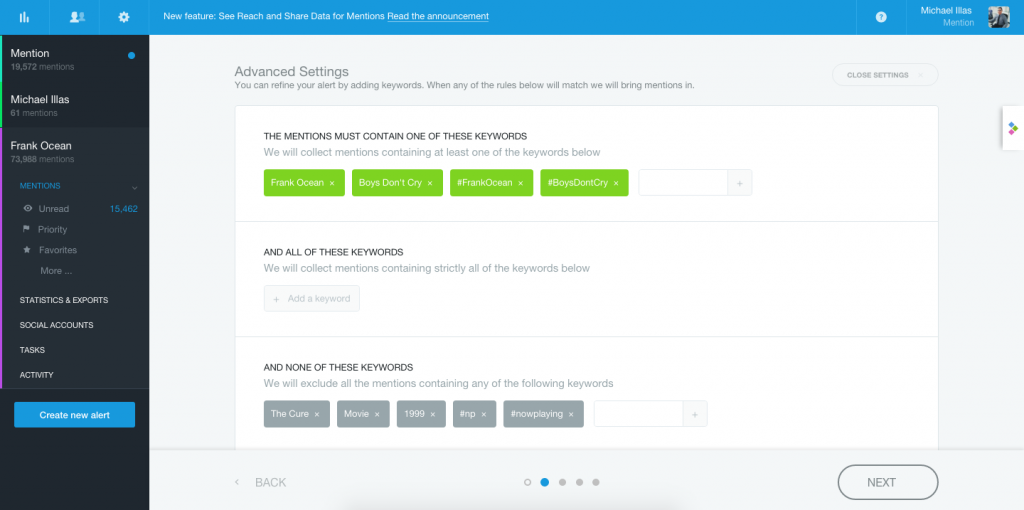As a kid, I never missed an episode of Scooby Doo. I loved it, as did millions of other kids. But when my professor compared it to PR, I was confused.
He told us that like Scooby’s gang, PR agencies have to track down clues to figure out a problem. But instead of figuring out who the monster is, you figure out what it is in the first place.
Like he said, when there’s a problem with a campaign, you have to identify and fix it quickly. And if you don’t, you lose a client. Which is why it’s so important to track every metric that matters to your campaign.
By monitoring closely, you’ll be able to quickly find all the clues to pinpoint your campaign’s weakness and fix it. And you also need to loop your client in, so they can see the campaign play out for themselves and witness your expertise first hand.
That’s why campaign tracking and reporting are just as important as the actual planning and execution. If you still need convincing, sit tight and read along to find out how monitoring helps boost your campaign results.
Want to see what else monitoring can do? Take a look at our free guide to media monitoring for agencies.
Why you need to track coverage
As a PR agency, you know that campaigns usually hit a bump or two. Whether it receives less traction than expected or a big publication makes a big typo, you need to find the problem ASAP in order to fix it. And the quickest way to do that is by tracking its coverage in real time.
For example, Rocket Science, a San Francisco-based PR agency, tracks their campaigns to see if they’re getting a good amount of buzz. If not, they’ll know that they need to rethink or expand their strategy. This guarantees that they can get clients the results they’re paying for, by adapting the campaign to meet its goals.
And a great way for last-minute results is to follow-up with journalists you originally contacted. Monitoring helps keep track of which press didn’t accept your pitch yet. So when you’re trying to get a second wave of mentions going, this makes it easy to follow-up on your original pitches in addition to reaching out to new outlets.
Aside from following up with people to create more buzz, monitoring also helps you with future campaigns.
Since outlets often get tips from watching each other, agencies need to look beyond the outlets they pitched. Tracking them down lets you know who decided your client was interesting enough to cover – journalists you should definitely build relationships with.
There may also be a time or two when someone posts a typo or mistake. If you catch it quickly, you can reach out to correct it before the inaccurate info does too much damage.
For example, if a tech company comes out with new hardware and a reviewer posts the wrong specs, consumers will be confused. But when you spot the mistake right away, you can quickly have them edit the article.
Monitoring will also help you find and respond to negative coverage – the most important kind to know about – as soon as possible. The unhappiest people often speak loudest, so it’s imperative to be on top of negative mentions in case you need to step in and reply.
Lastly, tracking helps you see how well campaigns spread and which outlets helped. Knowing them lets you know the top guys you should be pitching your next campaign to.
How to track coverage
Now that you know why you should track your campaign’s coverage, you need to know how to do it.
There are a few different ways to track PR campaigns. Some tools focus on social, while others are more SEO-orientated. Having one may give you decent insights, but if you want to get the most out of it, I’d suggest mixing them up.
SEO tools

SEO tools are amazing for a number of reasons. They’re excellent for tracking backlinks, seeing how influential websites are, and identifying where campaigns are being shared. This is how you’ll be able to track how campaigns improve your client’s SEO.
Even though there are dozens of options, Moz is my go-to for its wide range of features. Open Site Explorer easily shows you who linked to the campaign and what their SEO profile’s like, along with the URL’s share data.
Social listening tools
Social listening can tell you how your actual audience is reacting to your campaign on social media. Keyword and hashtag alerts will bring in conversations happening about the coverage it’s getting.
Some tools, like Twilert, email you content mentioning your keyword. Others, like Mention, offer a dashboard where you can filter and react to the mentions. Some also allow you to export analytics or a list of the mentions.
In order to properly track your campaign, you need to know which keywords to monitor. Some suggestions include:
- Your client’s name
- The campaign’s name and hashtag
- Any other relevant keywords, such as taglines or partners

If you need to, you can also add advanced filters like “and”/”or” keywords, negative keywords, and source filtering.
For example, if I were monitoring press for Frank Ocean’s upcoming album, this is how my alert could look. It contains his name, the album’s name, and related hashtags, while excluding anything related to the Boys Don’t Cry movie, The Cure, and any mention of people listening to him.
Media monitoring tools
Like listening tools, media monitoring tools also search based on keywords. However, they collect mentions from different sources.
Where social listening tools look at social media, media monitoring tools usually look at sources offline or elsewhere on the web. Or, like Mention, they monitor a combination of platforms and source types.
The monitoring process is just like with social listening tools. You add keywords and advanced settings, and choose the outlets you’d like to monitor. But you’ll be tracking different platforms.
How to report results to clients

You need to show your clients the numbers.
Whether you report numbers, show them content, or (ideally) both, it’s important that your client understands how well a campaign’s doing, and why. But remember that they’re busy, so avoid adding irrelevant data for them to go through.
Every number you share should be connected to the campaign’s goal. Information like the number of publications that wrote about the campaign, how influential they are, and how many people shared them, all show how much traction a campaign received.
You can create graphs and other visualizations of the data to help demonstrate the campaign’s growth and overall trends. By adding numbers, you go into specifics. And by including the actual content and conversations, you’ll provide insights on the overall reaction to the campaign.
I may be biased, but I like Mention’s analytics. Easily export the data, as well as lists of mentions, by clicking on the Statistics & Exports tab. You can also choose the sources, alerts, and time period you’d like to report on.
Conclusion
Each campaign is like a new mystery for Scooby and the gang to solve. You have something to catch – whether it’s a bad guy or a campaign goal – and need to track the journey to it.
You’ll be able to see where you need to shift your strategy, follow-up on pitches, or engage with your client’s audience. It’ll also be easy to track which coverage contributed most to the campaign’s success and help you in the future.
How do you use monitoring for campaign tracking? Let us know in the comments below!





